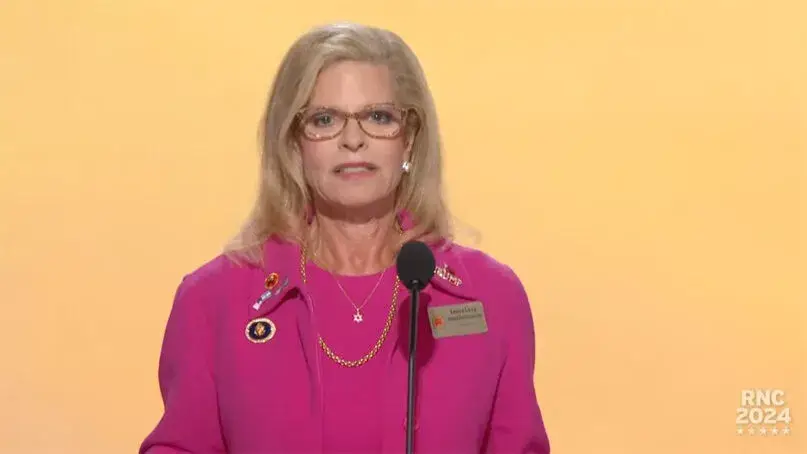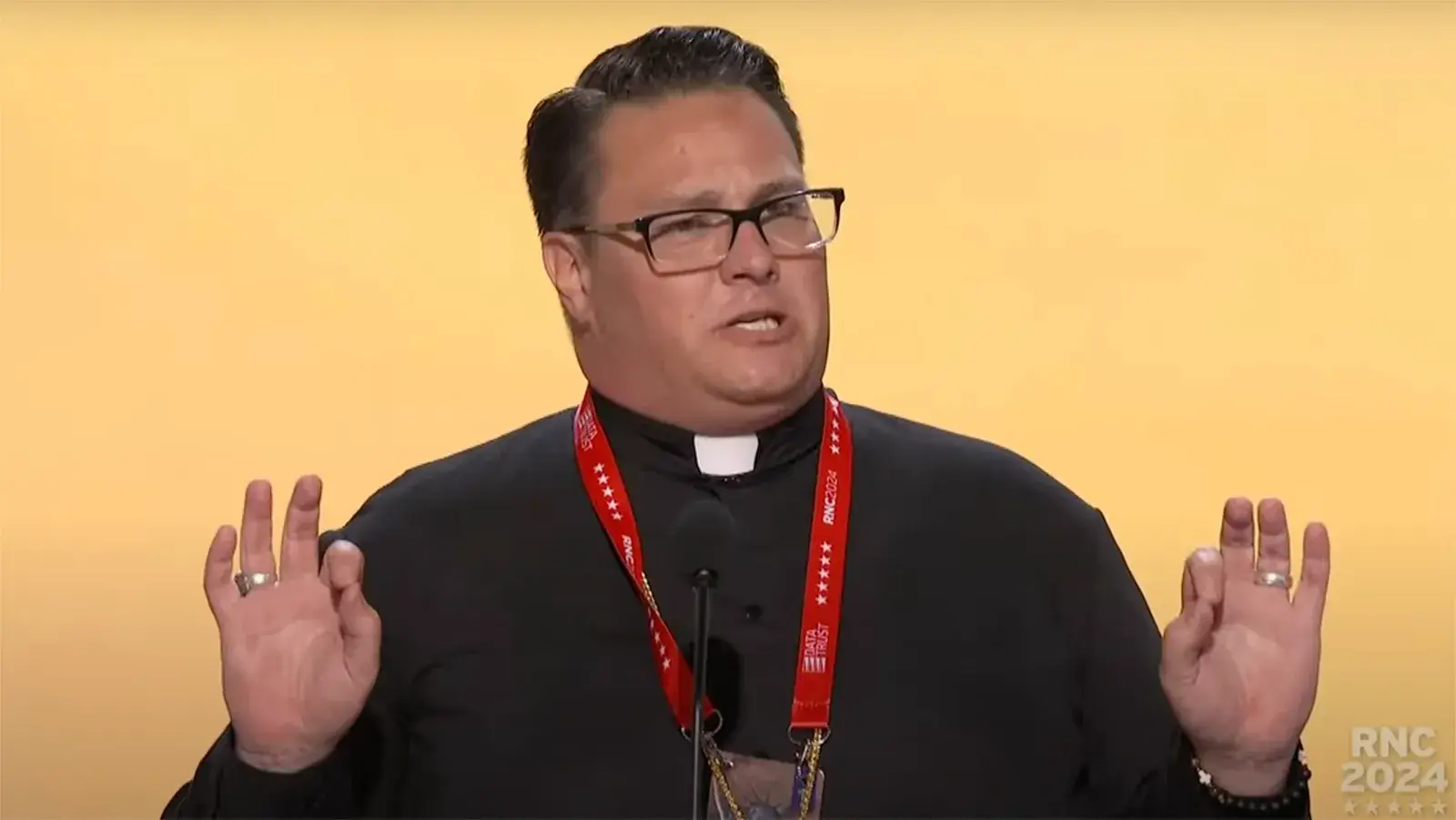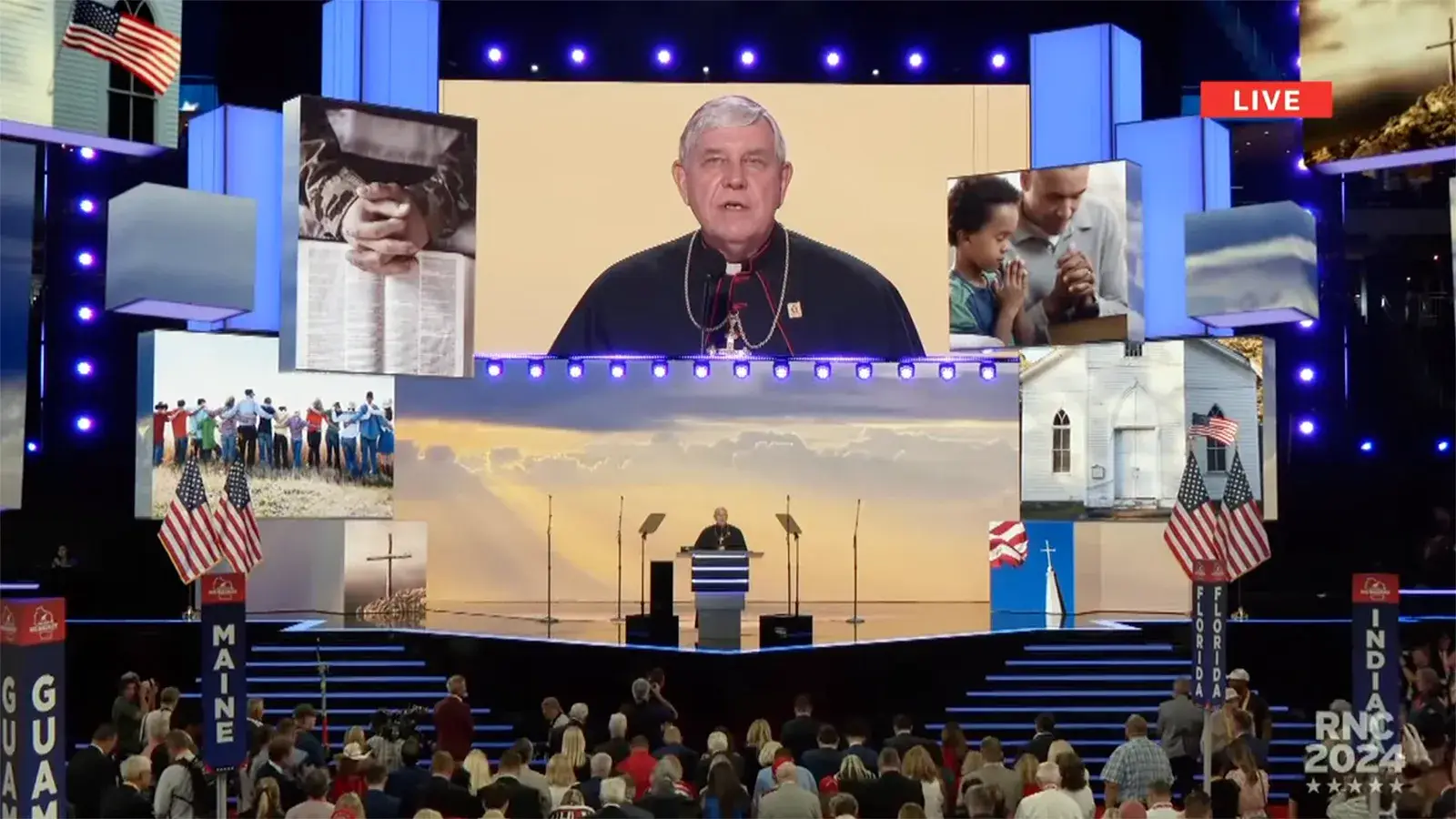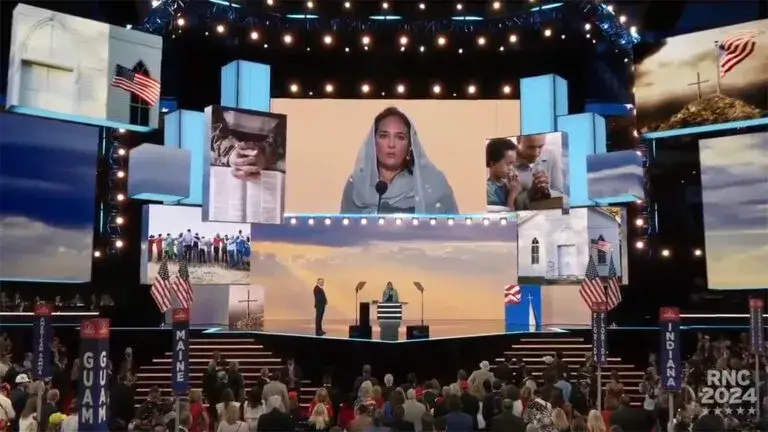Conflicting Religious Symbols at the Republican National Convention
During the Republican National Convention (RNC) on July 15, 2024, a notable contrast in religious representation was observed. As Connecticut businesswoman and former U.S. Senate candidate Leora Levy delivered a prayer with Jewish references, images of Christian crosses and churches were prominently displayed behind her. Levy, who is part of the Republican Jewish Coalition, thanked God for former President Donald Trump and referenced Deuteronomy 31:6 from the Hebrew Bible. She also prayed for Jerusalem and “all the children of Abraham.”

Later that evening, Harmeet Kaur Dhillon, a National Committeewoman for California, led a Sikh prayer. Dhillon, who also expressed gratitude for Trump’s protection, thanked God for “creating America as a unique haven on this earth, where all people are free to worship according to their faith.” The same Christian imagery was visible during her prayer, creating a stark visual contrast.
Balancing Pluralism with Christian Nationalism
The visual and thematic contrast highlighted the Republican Party’s ongoing challenge to balance inclusivity with its Christian nationalist elements. While explicitly Christian prayers were frequent, including those by Greek Orthodox Archbishop Elpidophoros and Catholic Archbishop Jerome Listecki, there was a clear focus on Trump during these invocations. Many prayers linked Trump’s protection to divine intervention, reflecting a broader trend within the party to emphasize Christian themes.

Rep. Marjorie Taylor Greene of Georgia and Sen. Tim Scott of South Carolina both celebrated Trump’s survival as a miracle, aligning his experience with a belief in America as a Christian nation. Scott’s comments underscored this connection, citing Jesus as “King of Kings” and “Alpha and Omega.”
Backlash from Conservative Circles
The inclusion of non-Christian prayers at the RNC triggered backlash from some conservative figures. Thomas Kidd, a professor at Midwestern Baptist Theological Seminary, criticized Dhillon’s Sikh prayer, suggesting that it was an example of “COEXIST” sentiment that did not align with conservative values. Conservative commentator Candace Owens also expressed disapproval, questioning the alignment of diversity and inclusion with conservative principles.

Nick Fuentes, a white supremacist and Christian nationalist, condemned Dhillon’s prayer as “Satanic Hindu” and “blasphemy,” reflecting a broader division within the party regarding religious pluralism.
The RNC’s Strategic Shift
The Republican Party is currently navigating a strategic shift, aiming to broaden its coalition while maintaining its core Christian nationalist base. This balancing act has led to controversial decisions, such as moderating stances on abortion and LGBTQ+ rights, which have sparked criticism from conservative factions.
Despite the tension, the presence of diverse religious voices at the RNC highlights an effort to appeal to a wider audience. However, the mixed reactions reveal ongoing debates about the party’s identity and values.
FAQ
What was the significance of the religious imagery at the RNC?
The religious imagery at the RNC, which included Christian crosses and churches, contrasted with the diverse religious prayers delivered, highlighting the tension between Christian nationalism and religious inclusivity within the Republican Party.
Who were the key figures involved in the religious prayers at the RNC?
Leora Levy and Harmeet Kaur Dhillon were key figures leading prayers with distinct religious backgrounds—Levy with Jewish references and Dhillon with Sikh elements. Additionally, Christian prayers were offered by figures such as Greek Orthodox Archbishop Elpidophoros and Catholic Archbishop Jerome Listecki.
What was the reaction to the Sikh prayer led by Harmeet Kaur Dhillon?
The Sikh prayer led by Dhillon faced backlash from some conservative commentators who viewed it as inconsistent with traditional conservative values. Critics argued that it contradicted the party’s emphasis on Christian nationalism.
How did the RNC’s handling of religious diversity impact its image?
The RNC’s handling of religious diversity highlighted the party’s struggle to reconcile its traditional Christian base with efforts to appeal to a broader audience. The mixed reactions to diverse prayers underscore the ongoing internal debates about the party’s direction and values.
What are the broader implications of the RNC’s approach to religious pluralism?
The RNC’s approach to religious pluralism reflects broader discussions within American politics about the role of religion in public life and the balance between inclusivity and traditional values. The party’s efforts to appeal to a diverse electorate while maintaining its core base reveal the complexities of modern political strategy.


